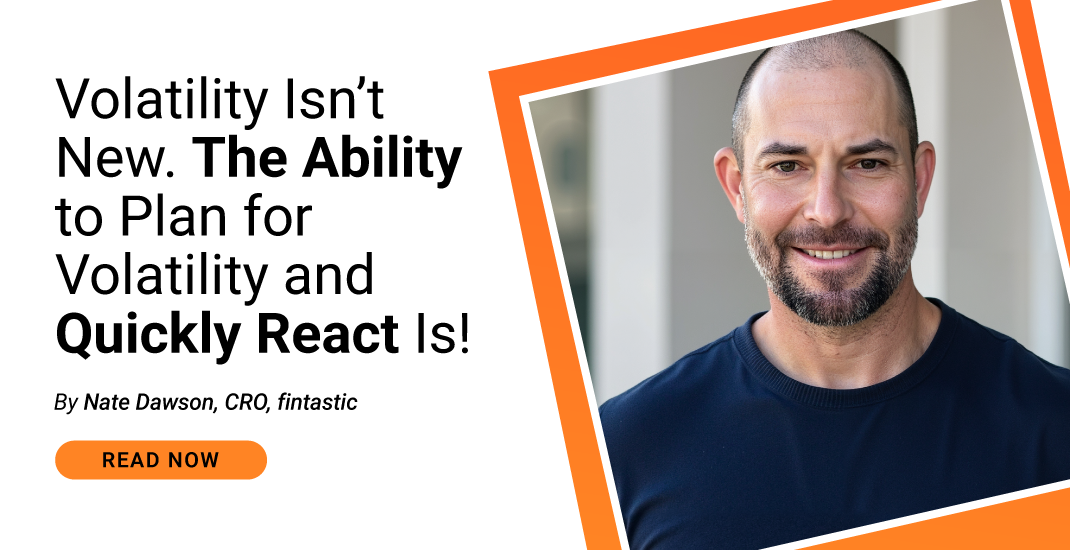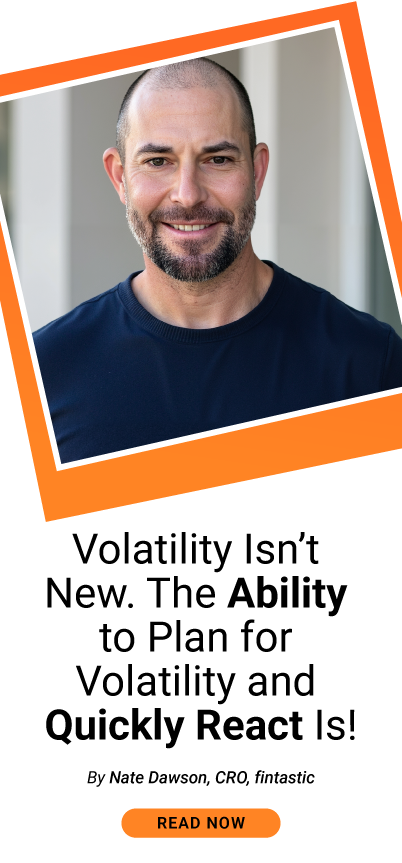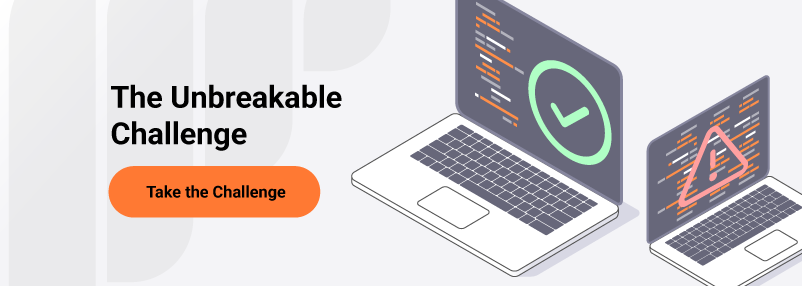Volatility isn’t new. The ability to plan for volatility and quickly react is!





Leaders who can plan for uncertainty, react quickly, and fully understand the impact of a new strategic plan will see their organizations outpace the market and their competition.
What I’ve learned along the way
I’ve spent my career in enterprise planning and AI, including a period when a new architecture reshaped the category. I’ve seen what breaks at scale: brittle models only a “wizard” dares touch, multi-month change cycles, fragile scenarioing that risks production, and planning engines that choke when data or dimensionality spikes. I’ve also seen amazing business outcomes when you remove those constraints.
That’s why I joined fintastic. This is the first platform I’ve seen that was architected for the AI era, not retrofitted for it. And the innovation shows up where it matters: speed, scale, and confidence in the numbers.
Volatility rewards the fastest planners
Geopolitics and policy whiplash can change your operating reality overnight. Tariffs shift, foreign exchange swings, supply routes, and your short-long term plans are wrong by morning. The need to strategize, scenario planning, and stay one step ahead is real. Every leader feels it, but not every system can deliver it.
In 2025, finance leaders are stepping up as strategic operators, translating signals into decisions faster and leaning on technology to do it. According to a recent *PwC pulse survey, “They’re pressure-testing forecasts against policy shifts and adjusting planning - 65% are adjusting financial forecasts and budgets in response to current volatility and 58% are investing in AI and advanced analytics - all while breaking down silos and helping the business stay agile and grounded.”
The planning category itself has room and desperately needs new leaders like fintastic. Enterprise Performance Management (EPM) is a multi-billion-dollar market growing at ~10% CAGR this decade, according to Grand View Research. New vendors like fintastic are ushering in third-generation software and breaking free from rigid molds.
Legacy is broken, fintastic is unbreakable
From hundreds of customer conversations (and more than a few tough proofs-of-concepts and deployments), the pain is consistent, driving the need for next-generation solutions. We’ve reached the breaking point, literally and figuratively:

- Scale without barriers. Models should keep up as businesses grow more granular and more dimensional. In a head-to-head evaluation with a global marketplace, including some of the newcomers, fintastic delivered >2× faster calculation on complex, high-dimensional workloads. This was done only on a subset of the model. As dimensionality grows, this multiplier will grow polynomially. Other legacy invitees declined to participate due to model complexity. (We won’t name names; the result speaks for itself.)
- Scenario speed (minutes, not weeks). When a new question lands, “What if tariffs increase?” “What if we pull forward hiring?”, you shouldn’t file a ticket and wait days. In fintastic, scenarioing is a few short minutes workflow, not a weeks-long program. In one customer use case, a 15-person FP&A team went from hour-long calcs and “only the wizard touches it” to ~10-second complex calcs and broad analyst adoption.
- Brittle models. In too many shops, one person “owns” the model, and a single misstep can break everything. With fintastic, independent versions isolate change. You can copy the live model, iterate, validate, and deploy without heavyweight application lifecycle management (ALM) rituals or risking production. It’s adopted across the team, not in one person's hands.
- Data that’s always current. Our direct-integration strategy reduces reliance on clunky ETL chains and day-old extracts. Stakeholders always have fresh data to make informed decisions.
- Lower admin drag. Cleaner architecture means fewer full-time administrators, faster time-to-value, and the ability for customers to self-build their next model after go-live. You shouldn’t need a standing army to maintain a plan.
What’s under the hood (and why it matters)
Our innovation and standout features aren't bells and whistles. They are game-changers. Customers go from slowly operating with decisions derived from outdated technology to creating strategic advantages based on tomorrow’s most likely outcomes.
So, what’s under the hood?
- Our calculation engines, the result of three years of relentless engineering, are the power behind the platform. Two engines, one optimized for dense and one for sparse calculations, automatically take over in real-time, so you get responsiveness on both highly sparse and highly dense entities in the same model.
- Independent versions, each a full, isolated model, enable safe parallel changes and unlocks unlimited parallel models that don’t affect the performance of one another. Teams can spin up and stress-test scenarios without ever putting production at risk.
- Direct connectors to ERP, HRIS, CRM, and data warehouse, with near-real-time refresh and deep drill-down and click-through.
- Smartastic capabilities are the family of strategic value-add features that leverage AI and other advanced algorithms. Highlights include simulations that produce probabilistic performance ranges (not just point estimates) and an AI agent that answers natural language questions from finance or any authorized business stakeholder across your organization using a messaging app like slack. Answers are precise, based on their data, and without hallucinations.
Intelligent, fast planning and analysis is the competitive advantage
If your plan-to-decision latency is measured in days, you’re ceding advantage to competitors who operate in minutes. And given where the world is headed, quick decision-making isn’t optional. The leaders I speak with are modernizing planning because (1) the market rewards speed, (2) AI-driven assistance is creating real value, and (3) the category’s growth shows there’s no shortage of impact to capture.
How to get started (and measure it)
🔸 Audit your latency. Time your current cycle: build → calc → decision. If it’s days, that’s your baseline.
🔸 Understand what you can’t model in your current platform due to its limitations.
🔸 Run one high-impact pilot. Pick a model with visible upside (pricing, demand, workforce). Replicate it in fintastic, and measure time-to-scenario and time-to-decision.
🔸 Scale by version. Use independent versions to expand safely, explore new geos and SKUs, or test out constraints, without risking production.
Why now? A final word.
The next wave of planning and decision-making is coming. Vendors are validating that this shift is underway, and buyers rightly expect next-gen performance. Our job is to set the bar: we are faster at scale, safer to change, and easier to adopt. That’s where fintastic is focused.
Want to learn more? Sign up for our webinar. Join our break the tool challenge.
References
🔸 CFOs are operating through volatility and leaning into tech to move faster and make clearer decisions. PwC
🔸 EPM/xP&A is growing—a multi-billion-dollar space compounding ~9–10% through 2032–2033. Grand View ResearchFortune Business Insights
🔸 AI adoption and value are rising, with broader C-suite use and more functions reporting revenue impact. McKinsey & Company



